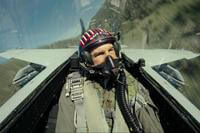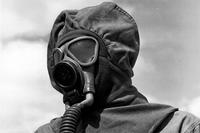Many readers may remember watching "NOVA" in middle school or high school science classes, and some of us haven't seen it since -- which is a missed opportunity for both science fans and history buffs. "NOVA," PBS' award-winning documentary science series, has been doing "MythBusters" stuff since the "MythBusters" cast was in high school.
This week, the show travels back to the American Revolution to explore the science of the weapons used by all sides.
Did the Redcoats deserve their deadly, formidable reputation? How did the American cannon break down the British defenses at Yorktown? Were the Kentucky riflemen really that much more accurate than the Continental Army? These questions and more will be answered (and recorded in high-speed, high-definition video) on the latest episode of "NOVA."

Today's veterans might balk at the idea of standing in a massed formation in an open field, waiting for the enemy to march within range of your weapons. We have things such as "cover" and "concealment" drilled into our minds from the earliest days of military training. But taking cover and firing piecemeal was not going to win battles in the 1700s. In fact, some of the standard-issue muskets of the day would never hit a single target, depending on how far away the enemy was.
Read Next: 'The Greatest Soldier in American History' Took a Tank Round to the Leg and Kept Fighting
That might be surprising, considering just how much of this planet the British Empire was able to conquer using muskets such as the Brown Bess. "NOVA" features a skilled marksman firing the British Army's smoothbore musket at a relatively close target, unable to hit anything -- even the planks holding up the paper target downrange. The reasons are many: the flash in the pan that ignites the long gun's powder, the extra milliseconds it takes to actually ignite the powder inside the bore and the muzzle velocity of the musket ball.
So how on Earth did the Redcoats conquer so much of that Earth? The British simply adjusted their tactics. Marching out in the field in a large group to fire hundreds of .69-caliber rounds en masse into another large group made for a lot of gruesome war wounds, as the colonial militia discovered at Lexington and Concord in 1775. But that didn't stop the revolution because the patriots had some wonder weapons of their own.

Veterans who deployed to Iraq or Afghanistan might recognize the origins of some of the walls that protected bases, camps and combat outposts in some of the Revolutionary War-era defenses tested by "NOVA." Wooden, dirt-filled gabions were the old-timey forerunner to today's Hesco barriers that still protect troops around the world. It might give some comfort to know that the innovative earthworks used by the British at the Siege of Yorktown were just as effective as they are today. It took George Washington three weeks of constant cannon fire to force Cornwallis' surrender behind these wooden-wicker earthworks.
When the rebels needed to kill the British on the battlefield, however, the weapon of choice was the long rifle. Used by sharpshooting rebel groups such as Morgan's Riflemen, it was much more accurate than the British Brown Bess. It had both front and rear sights, a rifled barrel and better ammunition that made it much more accurate. That raises an important question: Why would the largest and most well-equipped army in the world not use the long rifles used by the patriots? The reason is scientific, practical — and instantly understandable (at least, to anyone who's been under fire).
Find out what that is when this one-hour special premieres Wednesday, April 9, 2025, at 9 p.m. Eastern on PBS. The show will also be available for streaming at pbs.org/nova, NOVA on YouTube and the PBS App.
Keep Up With the Best in Military Entertainment
Whether you're looking for news and entertainment, thinking of joining the military or keeping up with military life and benefits, Military.com has you covered. Subscribe to the Military.com newsletter to have military news, updates and resources delivered straight to your inbox.

















